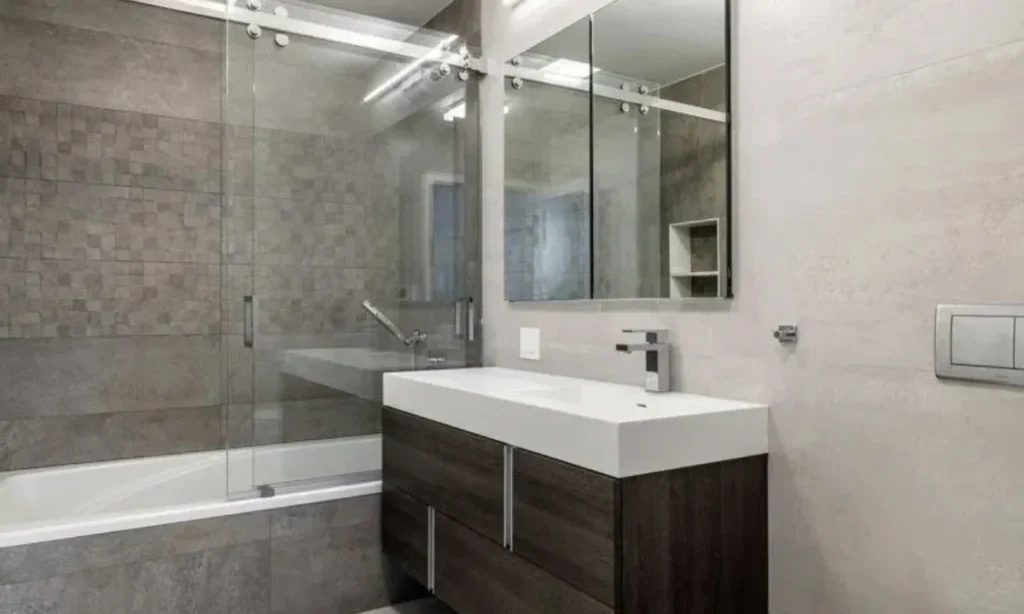here are differences among outlets regarding electrical safety in your house. Ground Fault Circuit Interrupter (GFCI) outlets are unique kitchen or bathroom outlets with reset and test buttons. If you are trying to figure out why GFCI outlets are required in kitchens and bathrooms. Then you are exactly at the right place. This blog examines the importance of these safety features in kitchens and bathrooms and how to install and maintain them correctly. GFCI outlets prevent electrical shock as they identify a current imbalance or ground fault an cut off the power. Simply put, a GFCI potentially save lives by responding in milliseconds to cut off the power if electricity begins to flow through an unauthorized path, like water or a human body.
GFCI Importance Outlets in Bathrooms and Kitchens

Bathrooms and kitchens require GFCI outlets because of their essential safety function in moisture-prone zones. A home’s bathrooms and Kitchens become dangerous for electrical risks because they contain running water with active appliances throughout the space. Kitchens and bathrooms where the water supply constantly splashes against sinks and showers are high-risk areas due to unprotected outlets. A person who makes one wrong movement can sustain severe electrical injury there.
Bathrooms and Kitchens Are High-Risk Areas
Bathrooms and kitchens are wet zones and high-risk due to their exposure to water from sinks, dishwashers, bathtubs, and other plumbing fixtures. Water is a powerful electric conductor, and any contact between electrical devices and water causes shock. A little splash can cause dangerous situations. That’s why it is significantly suggested that these rooms have GFCI outlets.
Electrical Code Requirements for GFCI Outlets
Per NEC, every outlet that is 6 feet or less near a sink needs to be GFCI protected in kitchens and bathrooms. This protection is also applied on kitchen counter tops for serving and in outside areas, garages and laundry rooms.
These code requirements are not only recommendations; they are applied to home inspections, renovations and new building. A switch to GFCI outlets can bring your house up to date as well as safer if your house still has the older regular outlets, in damp locations.
Necessity Of GFCI Outlets in Wet Locations
In areas that are more exposed to moisture, GFCI outlets have become the norm for a reason:
- Prevents Electric Shock: They immediately cut off when they detect current leakage as low as 4-6 milliamps.
- Reduce Fire Risk: Preventing short circuits that might result in electrical fires reduces the fire risk.
- Prevent Power Surges: GFCIs can shield delicate kitchen appliances from power surges.
- Peace of Mind: You know you reduce the risk in your home’s most hazardous areas.
How to Install GFCI Outlets Properly
If you’re a common man and only know a little about electricity, still you can installing a GFCI outlet by yourself. Here’s a detailed rundown.
- Turn Off the Power: Your first concern should always be safety, so Turn off the circuit breaker for the outlet that needs to replace.
- Replace Outlet: To get rid of the old outlet unscrew the faceplate then take it out of the electrical box.
- Correct Wire Connection: GFCI outlets feature terminals for line (incoming power) and load (outgoing power). The GFCI will not work if the wires aren’t connected correctly.
- Test the Outlet: Press the test and reset buttons to make sure the outlet is functioning properly after power has been restored.
Please do not hesitate to contact a qualified electrician if this seems too much to handle. The function of a GFCI outlet may be negated by improper installation.
Conclusion
Bathrooms and kitchens contain water are among the areas most vulnerable to electrical accidents. Because of this GFCI outlets are mandated by electrical codes and are not merely advised. When building a new home remodeling or just upgrading your safety installing GFCI outlets is a wise and possibly life-saving decision. They will also safeguard your house and family for many years to come if installed and maintained correctly.
FAQs
GFCI prevent shocks by immediately cuting off electricity when it detects a current imbalance or ground fault.
Use the integrated test and reset buttons at least once every month.
It’s safer to hire a licensed electrician, you could do it yourself if you have electrical work experience.




